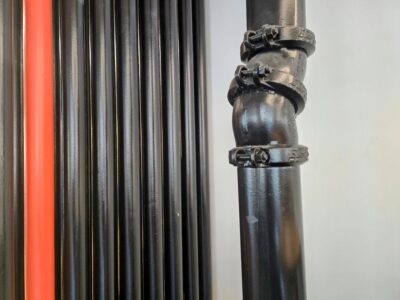It’s been nearly two weeks since the closure of the second round of the Paycheck Protection Program, the federal government’s relief program for small businesses affected by the coronavirus.
The program’s first batch of funds — $349 billion, via the CARES Act — went quickly when it launched in early April amid much confusion around eligibility and forgiveness rules. A reup was launched with $310 billion later that month, then extended to Aug. 8 in a bid to include as many eligible businesses as possible. The newly proposed HEALS Act from Senate Republicans would make even more funding available to small businesses.
Across the short life of the relief program, business across the mid-Atlantic have told Technical.ly how the funding helped them retain employees or maintain normal business operations — and in some cases, how they’re still struggling, or even shutting down because of the pandemic’s hits.
One ongoing question is whether the funds are being distributed equitably — along race and gender lines, as well as geographically.
PPP disparities have been a difficult story to tell. There’s a lot to know about the inner workings of small business lending, and the program was all done in a hurry, leaving lots of gray area. But sometimes, the best thing to do is to go to the map. With Congress negotiating another bill, it’s worth taking a moment to look at where the first round’s loans went.
With the help of journalism nonprofit Resolve Philadelphia via its Broke in Philly project, we did just that, below.
In July, the U.S. Small Business Administration and U.S. Department of the Treasury released a database of the first 4.9 million PPP loans it distributed. (It has since made 5.2 million loans, equaling $525 billion.) An important note about this PPP data, however, is that it’s very incomplete, and split the data into two groups — one of loans up to $150,000 and the other of loans that were $150,000 or more.
The small loans group shares the exact amount of money a business received, but doesn’t provide any identifying information on the business, so there’s no way to know what the businesses are. This also happens to be the group with the most loans.
The larger loans group, on the other hand, gives the names and addresses of all the businesses, but doesn’t share the exact amount of money they received. That means there’s no way to know exactly how much a large company received; instead, they’ll be listed as receiving something between $1 million to $5 million (drastically different amounts, even within one range), for instance.
Supplemental information in the data like the number of jobs saved or the race and gender of the owner are also largely incomplete in the SBA data set. This is because much of the information was optional for banks to report.
However, both data sets allowed us to map the number of loans in each ZIP code in Technical.ly’s markets. It’s clear that neighborhoods with more commercial corridors or a stronger concentration of businesses are more likely to have high numbers of loans.
Click on the hyperlinked city and state names here to see an expanded version of the maps:
In the First State, the total number of loans should be taken with a grain of salt: Delaware is a known tax haven, and hundreds of thousands of companies have their corporate address here, but don’t actually conduct business locally. In loans worth more than $150,000, we can identify PO Boxes or addresses that received multiple loans. But for the small loan group, there’s no way to know how many businesses are marked as being in Delaware but are actually operating somewhere else in the country.
Join the conversation!
Find news, events, jobs and people who share your interests on Technical.ly's open community Slack

Delaware daily roundup: Delmarva Power vendor stats; DelDOT's $15M federal grant; 50 best companies to work for

Delaware daily roundup: Over 4,000 Black-owned businesses uncovered; Dover makes rising cities list; a push for online sports betting

Philly daily roundup: East Market coworking; Temple's $2.5M engineering donation; WITS spring summit


